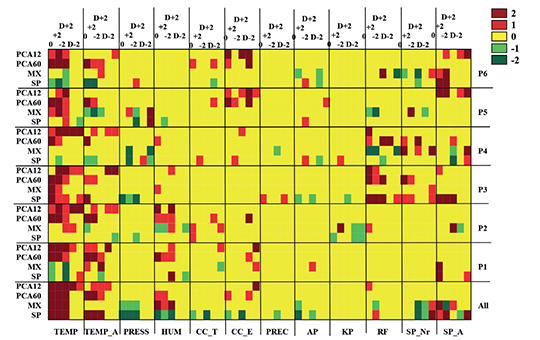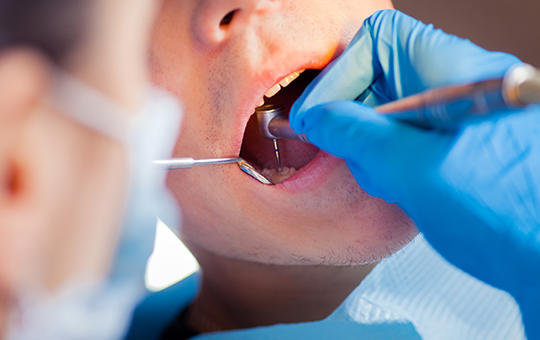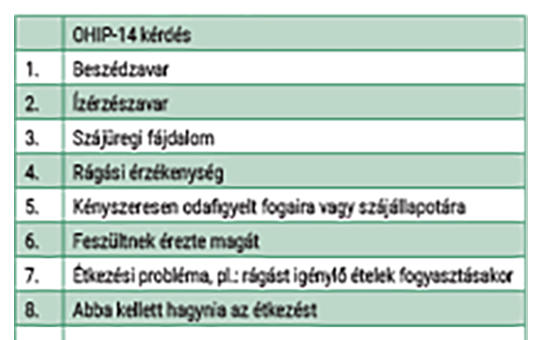The eLitMed.hu medical portal uses computer cookies for convenient operation. Detailed information can be found in the Cookie-policy.
Specialities
Diabetology
Personalized analysis of pain–weather associations: a pilot study
It is a wellknown belief that weather can influence human health, including pain sensation. However, the current data are controversial, which might be due to the wide range of interindividual differences. The present study aimed to characterize the individual pain–weather associations during chronic pain by utilizing several data analytical methods.
[Significance and diagnosis of diabetic neuropathy in clinical practice]
[Diabetic neuropathy is an early detectable microvascular complication of diabetes. Most often, we can recognize it by its symptoms of distal-type symmetric polyneuropathy, further the damage to the autonomic nervous system is increasing the cardiovascular mortality. Screening for diabetic neuropathy is essential in clinical practice, since the signs of nerve damage related to diabetes can be detected at an early stage and open the way to therapeutic interventions. Proper diagnosis and continuous monitoring of diabetic neuropathy is also important during the patient care. This summary concerns the importance and diagnostic options of diabetic neuropathy for clinical practice.]
[Women and migrain ]
[Migraine is a headache disorder affecting 14% of general population, being even more prevalent (20%) among women in the 20–64 age group, who are actively working and are mainly at reproductive age. 18–25% of migrainous women have an attack related to menstrual cycle, 7% of them having an attack only at this period. Fluctuation of estrogen level may be responsible for these attacks, we can use NSAIDs, slowly acting triptans or progestin-only treatment as short-term prophylaxis. Hormonal contraception is not contraindicated in migraine. Combined (estrogen+progestin) treatment is proposed only in migraine without aura, but in case of more frequent and/or severe attacks or the appearence of an aura treatment should be stopped. In migraineurs with elevated risk of stroke combined hormonal contraception should be used with caution. In migraine with aura patients progestin-only contraception is possible. During pregnancy in 55–91% of migraineus women attacks disappear or are less severe. In most cases migraine with aura attacks occur during this period. Non-pharmacological treatments should be considered as first in the treatment off attacks, with consideration of risk/benefit ratio paracetamol, metamizol or triptans may be used. With the menopause in 2/3 of patients migraine gets better but because of the fluctuation of hormon levels it can be worse than before. Hormonal replacement therapy is not contraindicated in migrainous women but it can result in worsening of migraine. ]
[The Legacy of Juan de Dios at the Dawn of Modern Nursing]
[The aim of this paper is to provide information on the history and cultural context of the work of Saint John of God, who became the patron saint of nurses and health workers. Sixteenth-century Spain served as a cradle for the innovations of Saint John and his followers, who established hospitals and provided care for the sick and the poor at a time when the Church was immersed in theological debates and thus seemed to forget one of its main missions: humanitarian and charitable aid to those most in need. The development of the Hospitaller Order’s nursing and health care practices, far ahead of its time, including the implementation of rules and regulations for hospitals and the extraordinary training of health professionals, is analysed. The continued work of the Religious of St. John of God, who operate health care and social service institutions in more than 50 countries today, is highlighted. Overall, we wish to provide a historical and cultural overview of the role of nursing and health care in society in the transition from the Middle Ages to the Modern Age. For this purpose, an analysis of the corresponding medieval and contemporary historical literature has been carried out beforehand.]
[The Importance of Dental Prevention for Our Health]
[In Hungary, people’s oral hygiene is very poor and signs of this can be seen from a very young age. The development of good oral hygiene habits should start after birth and be maintained throughout life in order to prevent the development of oral diseases. However, the consequences of poor oral hygiene are not only visible in the oral cavity, but can also have a detrimental effect on the whole organ system, leading to the development of serious diseases. To prevent these, health professionals at all levels of health care need to take preventive action.]
[Examining the Impact of Smoking on Oral Health-Related Quality of Life among Young Adults]
[The purpose of the study is to investigate the quality of life of young adults in relation to oral health and how smoking affects this. The aim is to explore the differences in oral health-related quality of life between smokers, non-smokers, and quitters in a given age group.
The survey was conducted using a self-designed online questionnaire that included the Oral Health Impact Profile (OHIP-14) questionnaire. The survey was conducted from May 01 to June 30, 2023, using a nonrandom sampling method that relied on easily accessible subjects. Data were processed and analysed using IBM SPSS 20.0 statistical software, descriptive statistics, Kruskal-Wallis test, and Spearman’s rank correlation analysis (p<0.05).
Based on the 317 assessable responses, smokers had a higher average OHIP-14 total score than non-smokers and quitters, but there were no significant differences in oral health-related quality of life between the groups (p=0.540). Four self-reported questions were added to the OHIP-14 questionnaire: dissatisfied with the colour of their teeth; afraid of communicating with others without seeing their teeth being seen; afraid of having a serious oral problem; afraid of losing their teeth. These issues are highly correlated with the OHIP-14 questionnaire and fear of oral lesions appears to be present among smokers.
Young adults do not yet show a significant deterioration in oral quality of life due to smoking, but additional questions are worth considering to assess the quality of life in smokers.]
1.
Clinical Neuroscience
[Headache registry in Szeged: Experiences regarding to migraine patients]2.
Clinical Neuroscience
[The new target population of stroke awareness campaign: Kindergarten students ]3.
Clinical Neuroscience
Is there any difference in mortality rates of atrial fibrillation detected before or after ischemic stroke?4.
Clinical Neuroscience
Factors influencing the level of stigma in Parkinson’s disease in western Turkey5.
Clinical Neuroscience
[The effects of demographic and clinical factors on the severity of poststroke aphasia]1.
2.
Clinical Oncology
[Pancreatic cancer: ESMO Clinical Practice Guideline for diagnosis, treatment and follow-up]3.
Clinical Oncology
[Pharmacovigilance landscape – Lessons from the past and opportunities for future]4.
5.









